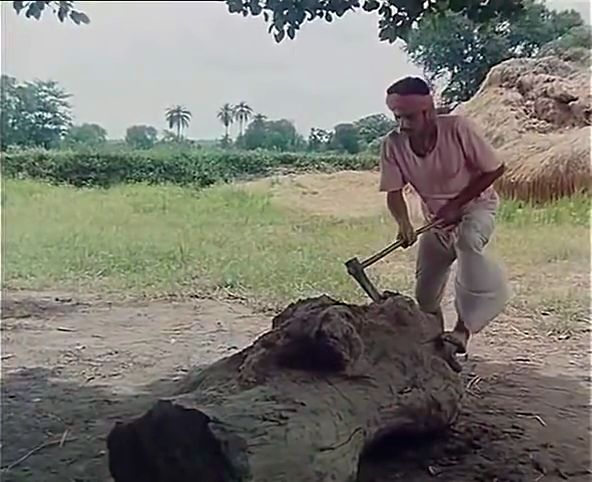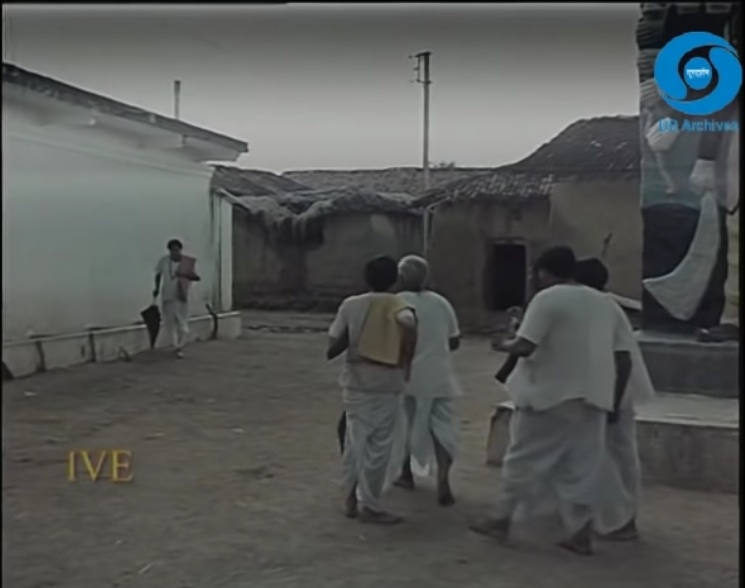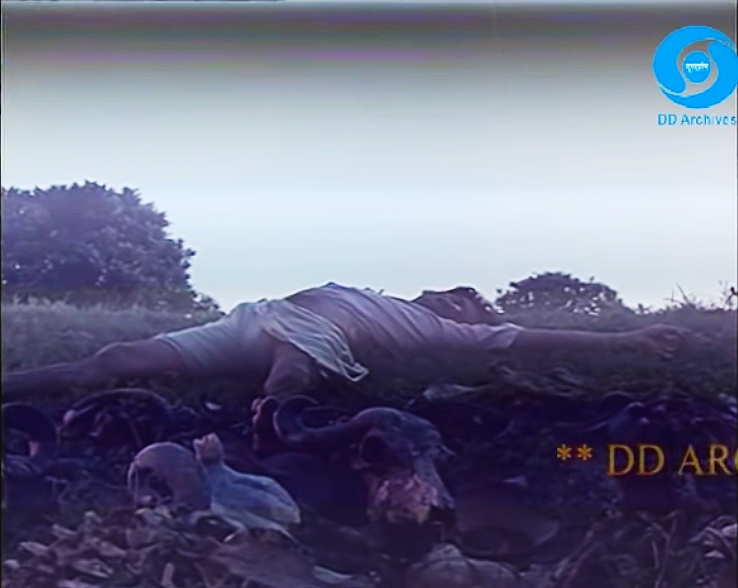Rediscovering the Social Life of Oppressed Indian People With Reference to the Hindi Film ‘Sadgati’ of Satyajit Ray
Sukanya Sarkar
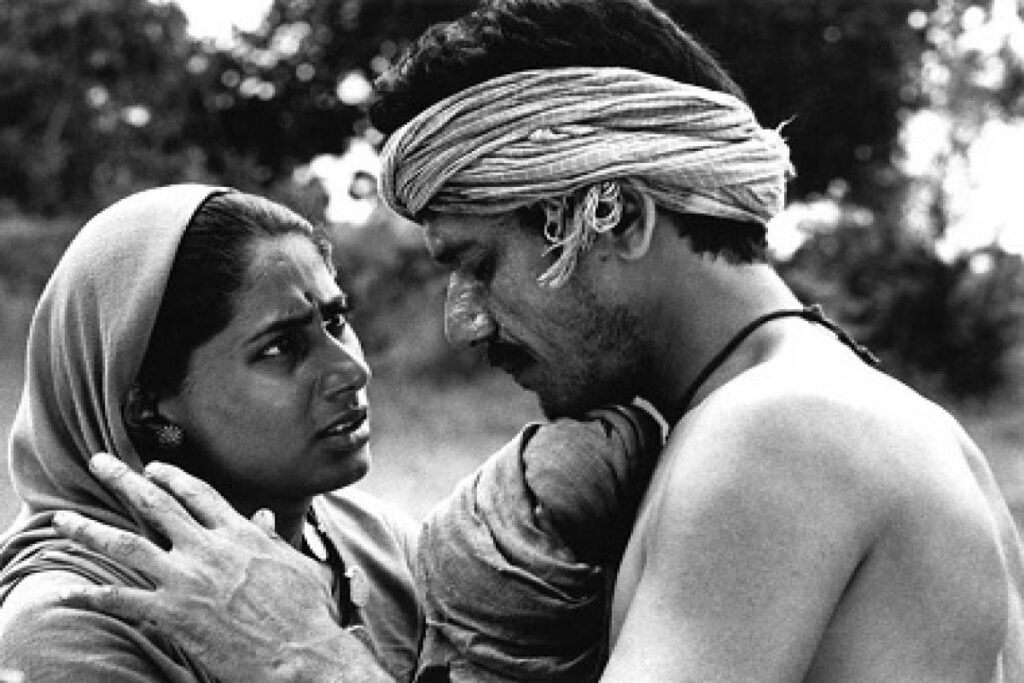
The film “Sadgati” of Satyajit Ray was depicted from a short story by Munshi Premchand, a doyen of Hindi literature. He had written it almost hundred years back and Ray made the film nearly four decades ago. The story portrays a realistic picture of rural Indian society in the time of post colonial rule. The miserable state of the low-caste untouchable Hindus in the society is the almost same even today. Even after four decades from the time Ray made this film, the caste system in Indian rural areas almost remains unchanged, barring a few cosmetic changes. Ray portrayed beautifully in this short film for Doordarshan the sordid reality of Indian’s caste system. He added very natural sound track in the narrative of a distressed family of three members (husband, wife and their little daughter) and few villagers. He knitted the series of different types of harassments meted out to a person who belong to the community of “Chamar”(involved in the profession of tanning or shomendering).
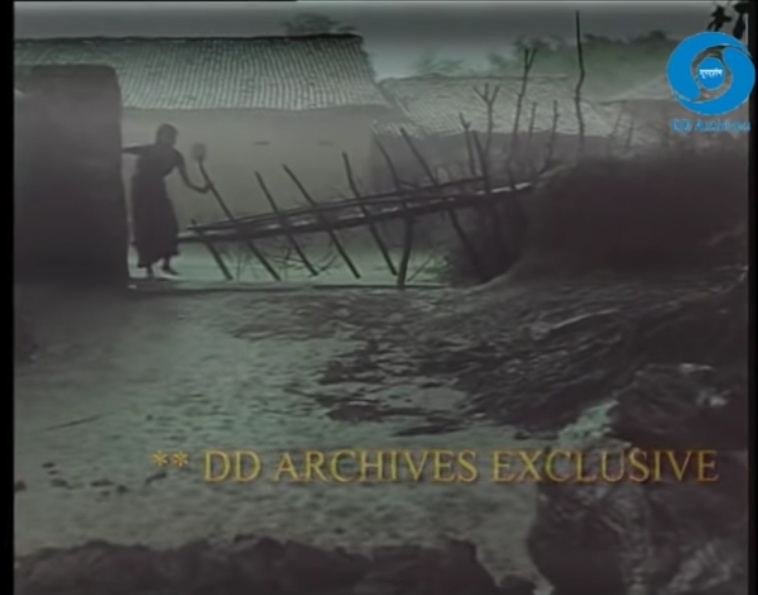
The very simple and brief music of the film “Sadgati” needs special mention. The application of natural sound, like ringing of bell is commendable and appropriate for the linear form of narrative. The instrumental orchestration of simple folk tune in the beginning of the film is very wonderful and set the exact mood and essence of the environment of rural area. There are no such significant critics’ reviews available on Ray’s “Sadgati” or Deliverance. But few viewers have written their experiences after seeing the film which is available in some social networking sites.[1] Scholar Nishat Haider has done a detailed study on “Dalits” where he highlighted Satyajit Ray’s realistic aesthetic touch in the film “Sadgati” and the beauty of the story of Munshi Premchand. I have gone through Haider’s article which can give a clear idea of the exact social status of the untouchable community.[2] Bhaskar Chattopadhyay has also written a wonderful translation about the film and the mesmerising performances of leading characters of the film “Sadgati”. [3]The nuances of sound in the film “Sadgati” was designed by Amulya Das. [4]The music of the film was directed by Satyajit Ray and film won the national award in the year 1982. But unfortunately only a faded copy of the film is available in the National Film Archive and this copy has no subtitle. In this context I like to mention the version which is available in Youtube can’t be downloaded. Critic Mehal Yadav has written an article on “ Sadgati: A Lost Chapter in the History of Hindi Cinema on 16th December,2018 in a web review.[5]

No artificial musical track is applied to underline a situation. Apart from some short musical application, phenomenal sound is assimilated in an artistic way. The chirping sound of birds in rural atmosphere during the day time is applied throughout the film. This sound is typical of rural surroundings. The entire sound tracks and musical pieces suit perfectly with rural atmosphere of India and this may be considered as the aesthetic beauty of a realistic film. The film itself put a lot of interrogation marks to the civic society of our country. In fact, after seeing the film we can come to a conclusion that how the low- caste, less educated & less fortunate people are exploited by rich high caste people almost like a slave of yesteryears. The low-caste people of our society are still deprived of their basic rights to live a normal life with self respect. The film is a sad story of a family of three, more or less happy in their daily life. All of a sudden the family meets with an unheard of ordeal. Dukhi, the husband arranged the marriage of their daughter, Dhania at a very young age which was the order of the day. He decided to invite the Brahmin priest to his house to know an auspicious day for bethroal. He cuts some grass and ties it with rope (made of straw) to give the priest as fodder for his cattle. Dukhi tells his wife to arrange a “Thali” for gift as and when the priest comes to their house and specially instructs her to put a coin or “Sikka” in the “Thali” (a gift to please the priest). But he firmly told his wife, Jhuria not to touch the coin, as they belong to untouchable community according to the caste system.
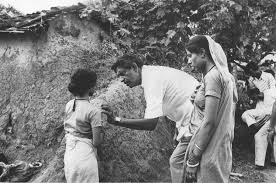
After giving instructions about the gift to please the Brahmin, he tells his wife to make a floor mat with a particular leaf which is considered sacred on such occasion. He meets the priest in the morning with grass and requests him to come to his home for fixing an auspicious day for her daughter’s engagement. Realising that, Dukhi is in dire need of a Brahmin, the priest makes an attempt of getting some free labor from him without spending a penny. The Brahmin priest starts treating him as a born slave and orders him to do several heavy works. On that particular day Dukhi was very weak which we see in the first scene because of his prolonged infection and fever. After some strenuous job he begins to feel dizzy. At that point of time, another man of lower- caste laborer understands the physical weakness of Dukhi due to his starvation for long hours, and advices him to ask for some food from the Bramhin’s house. But Dukhi refuses to ask for food as he has come to the priest’s home for some favor. After listening to Dukhi’s problem that man arranges some tobacco for smoking which may give him a little bit of energy for the time being to chop wood. Ray explored the ramification of Hindu-caste system in a very detailed way. The scenes portrayed the pre-dominant untouchability of Hinduism where the low- caste people were not even allowed to touch the feet of a Brahmin.
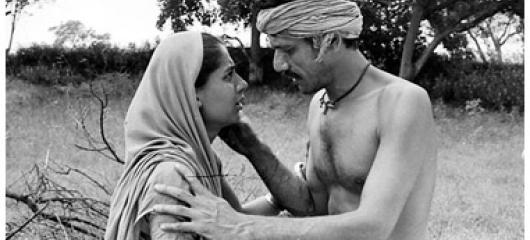
After the completion of the tedious job Dukhi is entrusted to do, he proceeds towards the house of the priest and notices that the priest, in a very pleasant mood, is reciting some Sanskrit “Slokas” and two persons are listening very seriously. After the recitation the priest explains the meaning of the “Slokas” and also tells him that he himself married thrice so far. It may be mentioned here that the two persons were father and his son. Incidentally very recently the son has lost his wife and he is very much relieved to hear from the priest, that a male should always marry after the demise of his wife because descendants are needed to run the tradition of a family. But even in that moment of spiritual discussion with the people of the village, the Brahmin does not forget to get his work done by the too much exhausted Dukhi. In this scene Ray designed the musical track behind the shots of Dukhi’s strenuous job with a tense sorrowful tune in Flute as theme- music.
After some work, when Dukhi gets the blunt axe, it seems to the viewers that he is looking at the log as if it was a hard rock. In spite of that he made repeated attempts to cut it. Even he tries to sharpen the edge of the axe, but all his efforts are in vein. The sound which is applied behind the scenes of sharpening axe is very real and almost seems natural. The hard piece of wood is a symbol which may be compared to the superstition of the upper caste Hindu community which is almost impossible to change.

Dukhi asked for some fire from the priest’s wife. She was very much irritated for such a request from Dukhi and she became very angry and started to talk about low- caste people’s audacity in abusive language. Dukhi realizes that how the low caste people are deprived of human basic rights and self respect. It is an insult for him and after getting such a merciless behavior from priest’s wife, Dukhi starts to blame himself and very obediently he tells her to forgive him. With his extreme weakness, Dukhi fails to cut the hard piece of wood into small pieces in spite of his best efforts. His tiredness compelled him to take rest for a while and gradually he falls asleep by the side of the tree. At that time the Brahmin was taking lunch and talking to his wife, and she is advising her husband to avoid the sunlight of the afternoon to go to Dukhi’s home. We notice that at least for a moment the lady shows some feminine softness and thinks of giving some food to Dukhi. But her husband reminds her that this community is always voracious eater so five six home -made bread would not be enough for a person of his class. After taking a wholesome lunch, the priest is enjoying a siesta peacefully and when he wakes up, he notices that the time is 2.20 pm and suddenly he thinks that he should check the progress of Dukhi’s work. He was astonished to notice instead of being engaged in work, Dukhi was sleeping. He started scolding Dukhi for his irresponsibility. The Brahmin shows his heartless behavior by forcing Dukhi, already unwell, to chop wood for such a long time and that unexplainable torture can be held responsible for the tragic death of Dukhi and almost in other words it is a sort of murder.
During all these sequences we see some other incidents in the film like
1) Dukhi’s wife Jhuria is buying some materials for the Brahmin from the grocery shop of that area of the village
2) Dhania is picking leaves to make mat and plate for the Brahmin
3) The priest is giving advices and knowledge to less educated people
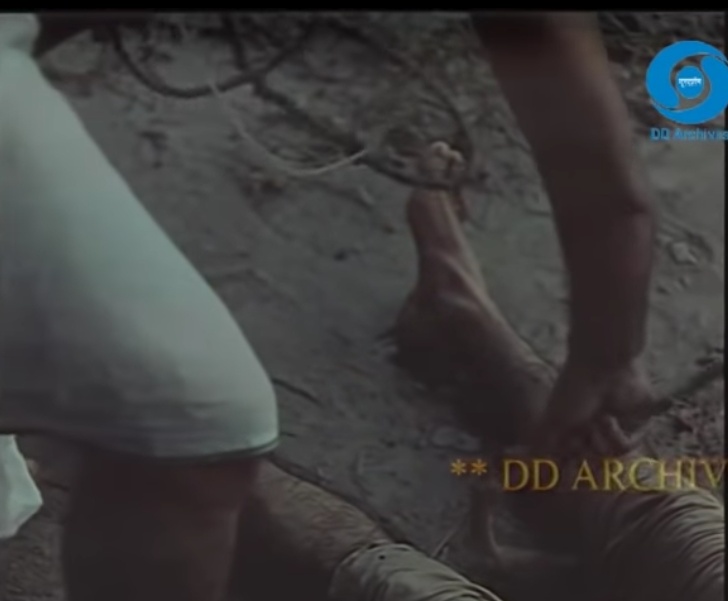
When Dukhi realizes that it is an impossible task for him, he almost became mad and started striking the log uninterruptedly and after sometimes he dies. His action clearly indicates that he was physically unstable. The way he was cutting appeared to be abnormal and incidentally he fell unconscious on the ground. At that point of time Brahmin’s son was coming back from his school and saw Dukhi fall on the ground. He immediately informed his father.
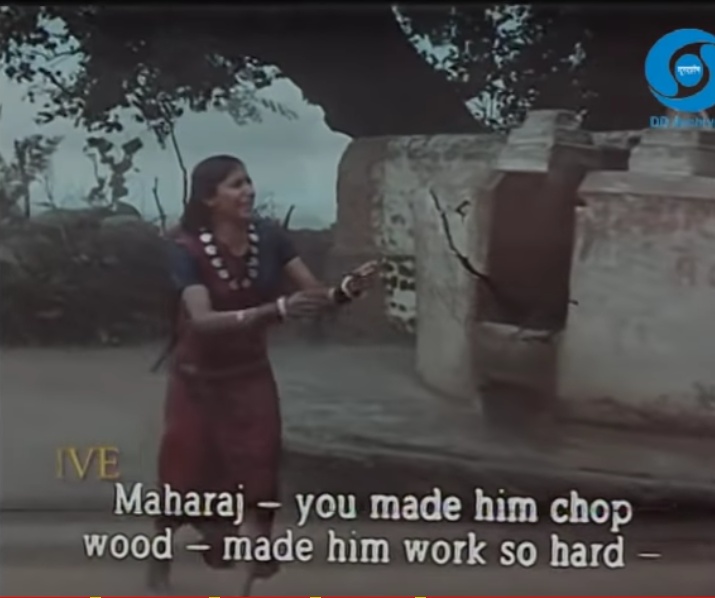
This sad incident was also noticed by another person standing nearby .The Brahmin realised the gravity of the situation and wasted no time to reach the spot to see what exactly happened. At first, he thought that Dukhi has fallen asleep but within seconds his worst fear was confirmed. It won’t be an exaggeration to say that Dukhi tumbled throughout his life and tumbled out of it. The appearance of the priest did not indicate any sign of remorse or guilt. The statue of Ravana is shown in the film quite a few times in different scenes. Perhaps in a very subtle way the director painted the Brahmin as Ravana (in Hindu mythology; a symbol of tyrant evil) to low caste people.
The terrible news was such a shock that Dukhi’s wife Jhuriya became almost mad and reached the place, immediately where Dukhi’s dead body was lying. The incessant rain after few hours added a misery to the scene. The natural sound of heavy shower made a realistic essence in the film. Dukhi’s wife in disbelief thought that perhaps, he was still alive and made fervent efforts to awaken him. But even after several attempt she realised that Dukhi is no more. She,out of her extreme helplessness and anger, knocked the door of the Brahmin and solely accused him for Dukhi’s terrible death. Out of fear the brahmin did not answer as they were fully conscious about the misdeed they committed. Terribly afraid of some untoward incident they did not have the guts to face Dukhi’s wife. The Brahmin apprehended something much worse was in store for him.
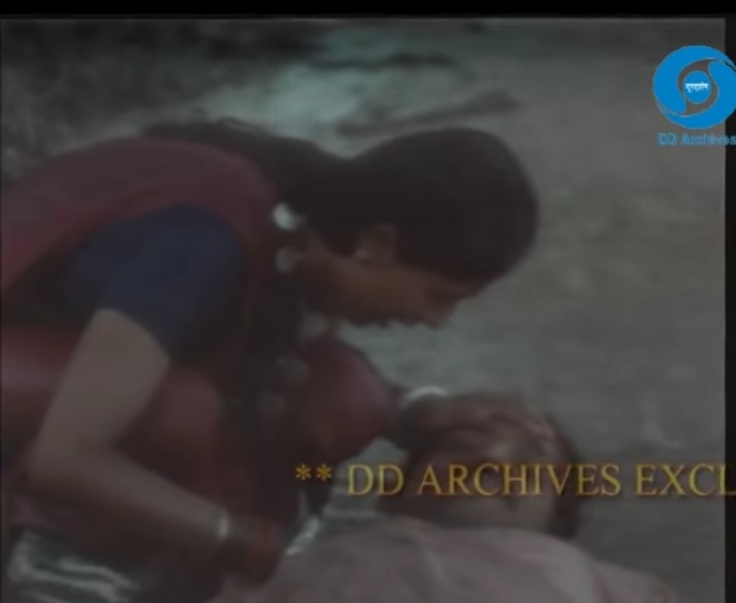
The tragic and horrible end of hapless Dukhi is not permissible in any civilized society. It is glaringly evident that although slavery as an institution did not exist in India at that time, the upper-caste did not hesitate to exploit the lower caste people as they did before. The difference was that there was some fear of law and order. The hard piece of wood may be compared to the superstition of the upper caste Hindu community which is almost impossible to change.
Dukhi lived a life of ignominy till his death. Even after death there was no respite. There was nobody, even from his community to take the body for cremation. It was a mark of protest from the community against the Brahmin and the prevalent primitive customs of the society. His body was carried by the Brahmin with a rope tied in his leg to a place where animal caracas were dumped. The scene was so horrible that it was beyond description. It is indeed a blot in our civilized society. The whole civilized world would shudder to notice such an inhuman custom in Hindu society. At the same time certain customs like child-marriage, the brahmin’s sole authority to decide which is an auspicious day and many other superstitions are undoubtedly deplorable.
Both the story of Munshi Premchand and the film of Ray remain relevant even today. In the second decade of 21st century, when a Dalit college girl was forced into consuming a toilet cleaner we can easily understand that how the caste-system plays a dominant role in the conservative society of India even today. We often go through this type of news which makes headlines also. But we are not ready to accept the harsh cruelties of our caste system, which is a reality even in the modern age. Ray very successfully represented the exploitation which the low-caste Dalit people face in their life. The issue of caste system is associated with superstitious practices of Hinduism. In Sourodipto Sanyal’s article – “Revisting “Sadgati” by Satyajit Ray: Caste in Indian Cinema” we find how he defined the relevance of Ray’s film “Sadgati” in the present time. [6]
I would like
to conclude my article with a quotation from Openroadreview.com “ Sadgati, or
‘The Deliverance’ is a film that in all
its aspects doesn’t fail to deliver” .
[1] .https://www.rottentomatoes.com
[2] https://www.tandfonline.com Original Article Framing Dalit: A Study of Satyajit Ray’s Sadgati
[3] https://www.firstpost.com>Sadgati:Based on Premchand’s story,Satyajit Ray took a scathing look at the tragic life of untouchables Oct08,2017
[4] https://www.thehindu.com>article Sadgati(1981)- The Hindu
[5] https://www.arthousecinema.in Open Road Review |Posted by Puru
[6] https://www.indiaresist.com Sourodipto Sanyal 24th Jun-2016 Revisiting “Sadgati” by Satyajit Ray: Caste in Indian CINEMA
